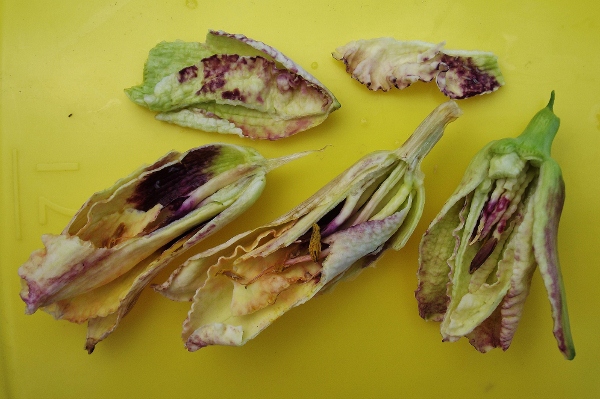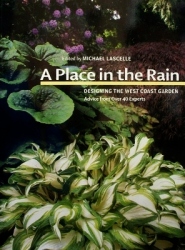Pest and Life Cycle – (Contarinia quinquenotata) This tiny fly emerges from the ground in early May and lays eggs on Hemerocallis blooms in spring, usually May to early June. These develop into miniscule white maggots (seen on the upper right petal) that feed on the inside of the unopened flower buds. The larvae eventually drop to the soil below and pupate there over winter. There is one generation per year. Introduced to British Columbia in 2001.
Symptoms – The flower buds become distorted (more rounded) and pale, losing their green colour. These fail to open and when split, are watery inside.
Management – 1. Check for distorted buds as soon as they start developing, usually late May to early June. 2. Remove the buds and discard using the following methods; place in a sealed plastic bag and dispose of in garbage; place in a sealed plastic bag and freeze for 48 hours; burn. 3. The discarded buds should not be composted as the midge will still be able to complete its life cycle. 4. There are currently no domestic or organic-based pesticides that control this pest. 5. Yellow sticky traps (which attract and trap the fly) placed nearby during egg-laying season may be of some benefit. 6. Plant later-blooming or resistant cultivars such as ‘Frans Hals’ (orange/ yellow bicolour), ‘Pardon Me’ (purple) and ‘Stella de Oro’ (golden-yellow).




